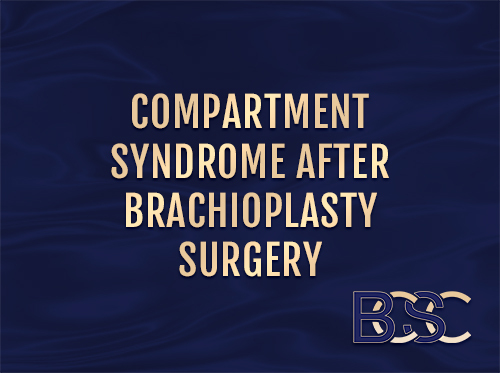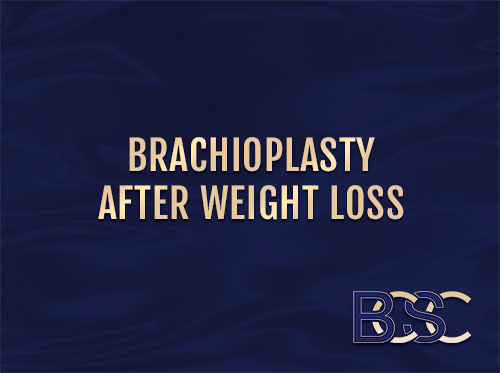Arm Lift Scars: What to Expect and Tips for Scar Healing
Arm lift surgery (brachioplasty) always leaves a scar. While the scars from an upper arm lift are permanent, there are steps you can take to make them heal as nicely as possible. Once the scar fades, many people feel more comfortable showing off their upper arms in their preferred clothing styles. Follow the scar management tips in this article to promote a nice-looking scar after brachioplasty surgery.
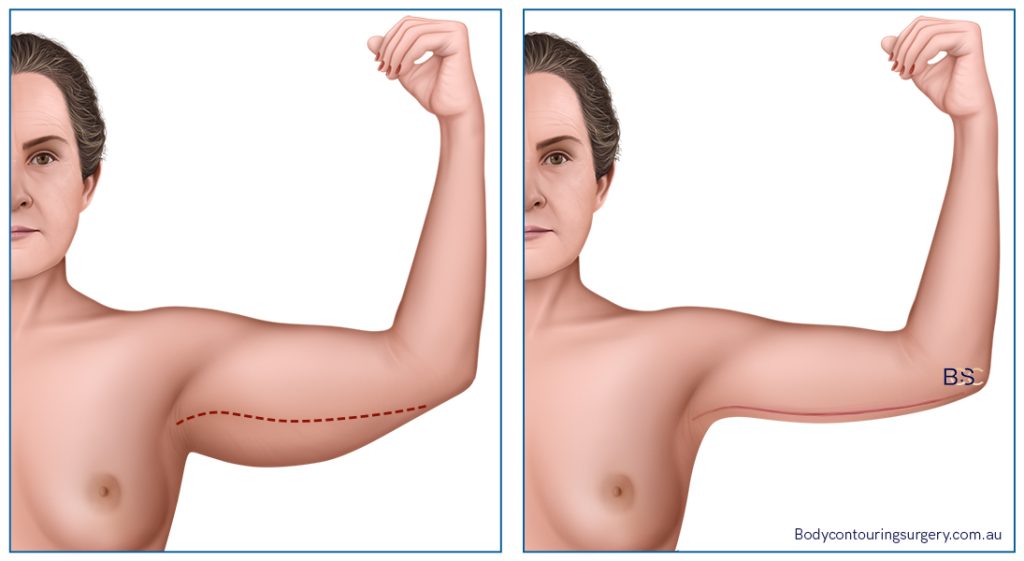
The scars from arm lift surgery
The incision is usually placed on the upper arms. The scar length and location can vary based on the details of your surgical plan. For example, a mini arm lift has the smallest scar of all. An extended arm lift may have a lengthy scar extending from the elbows to the armpits and then down onto the sides of the chest wall. A full arm lift usually has a vertical incision that runs along the length of the upper arms, from the armpit to the elbows.
It takes time for arm lift scars to fade
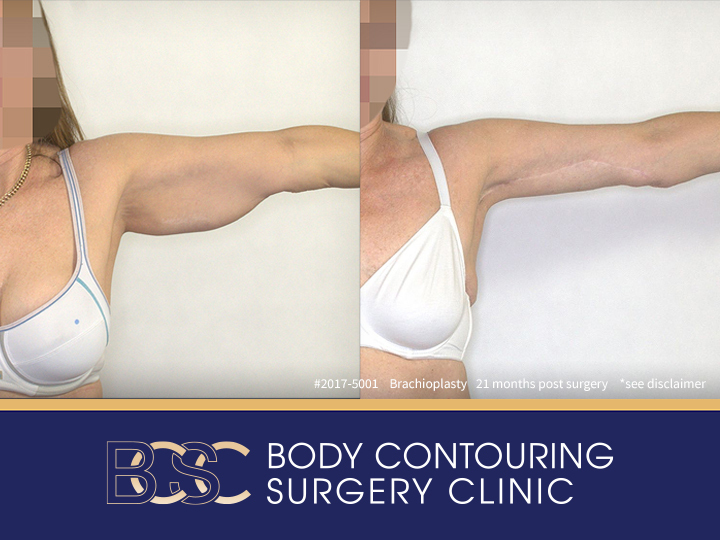
Disclaimer: Operation performed by Dr Bernard Beldholm. Adult content, surgery has risks, individual results vary, seek 2nd opinion. Please see the full disclaimer.
Surgical scars don’t fade overnight. The process can take a long time. You’ll hear many surgeons say the upper arm lift scars usually start to fade after six to nine months. However, it can take one to two years for scars to mature. Once fully healed, the arm lift scars usually fade to a fine line. The scar will not disappear completely and may be lighter than the skin around it.
Every patient is different
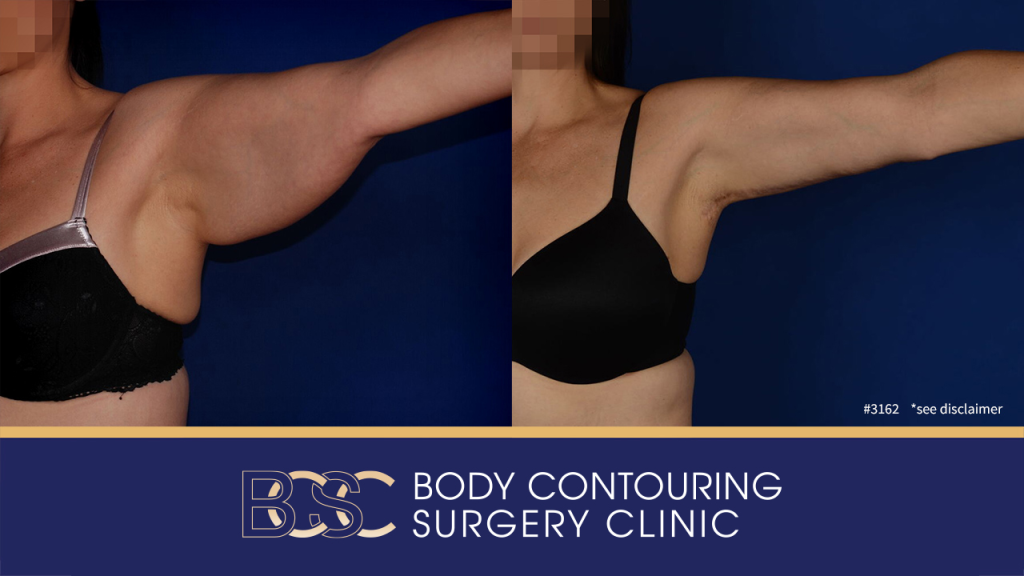
Disclaimer: Operation performed by Dr Bernard Beldholm. Adult content, surgery has risks, individual results vary, seek 2nd opinion. Please see the full disclaimer.
Not all arm lift scars look the same. Arm lift surgery scars can vary in length and position. The scar’s appearance can also differ tremendously based on the patient’s natural wound-healing abilities. Some arm lift patients have permanently raised, dark, or thick scars, although abnormal scarring is not typical.
Tips for Arm Lift Scar Healing
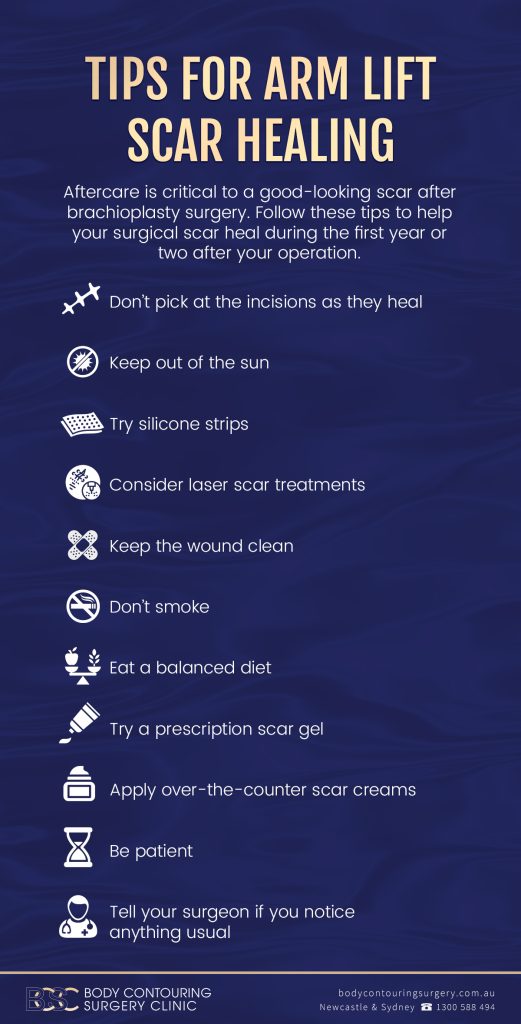
Aftercare is critical to a good-looking scar after brachioplasty surgery. Follow these tips to help your surgical scar heal during the first year or two after your operation.
Tip 1: Don’t pick at the incisions as they heal
If a scab forms after your upper arm lift surgery along the incision line, leave it alone. Nature will take care of it, and you only risk worsening the scar if you try to speed things along by picking at your skin as it heals from arm lift surgery. Wearing your compression garment around your arms can be a good way to avoid the temptation to fiddle with your scar.
Tip 2: Keep out of the sun

As the incisions heal from arm lift surgery, the skin produces collagen to form a scar. The skin also produces elastin to improve skin elasticity. Constant sun exposure is proven to deform collagen and elastin fibers, which may lead to irregular scarring after upper arm lift surgery. In the first year or two, as the scar heals, it is wise to apply sunscreen daily and wear long sleeves to protect the scar from damaging UV rays.
Tip 3: Try silicone strips
![]()
Medical-grade silicone strips are one of the easiest ways to promote scar healing. All you will need to do is apply a clean strip once a day. Silicone acts as a natural barrier to improve moisture and oxygen retention within the skin. This facilitates the skin’s natural repair process to help the arm lift surgery scars heal. Medical researchers have found that regularly applying silicone strips or self-drying silicone gel may also improve the appearance of keloid scars.
Benefits of silicone scar sheets
A 2009 medical paper discusses the advantages of silicone scar strips.
- Silicone improves skin hydration and helps to regulate fibroblasts and growth factors for softer, flatter scars.
- Silicone acts like a barrier to keep out bacterial invaders, lowering the risk of infection after arm lift surgery.
- Silicone helps to regulate collagen production and increases levels of collagenases, which aids in breaking down excess collagen, so there is less risk of keloid or hypertrophic scarring after upper arm lift surgery.
- Silicone may reduce itching and discomfort that can occur as the scar heals.
Tip 4: Consider laser scar treatments
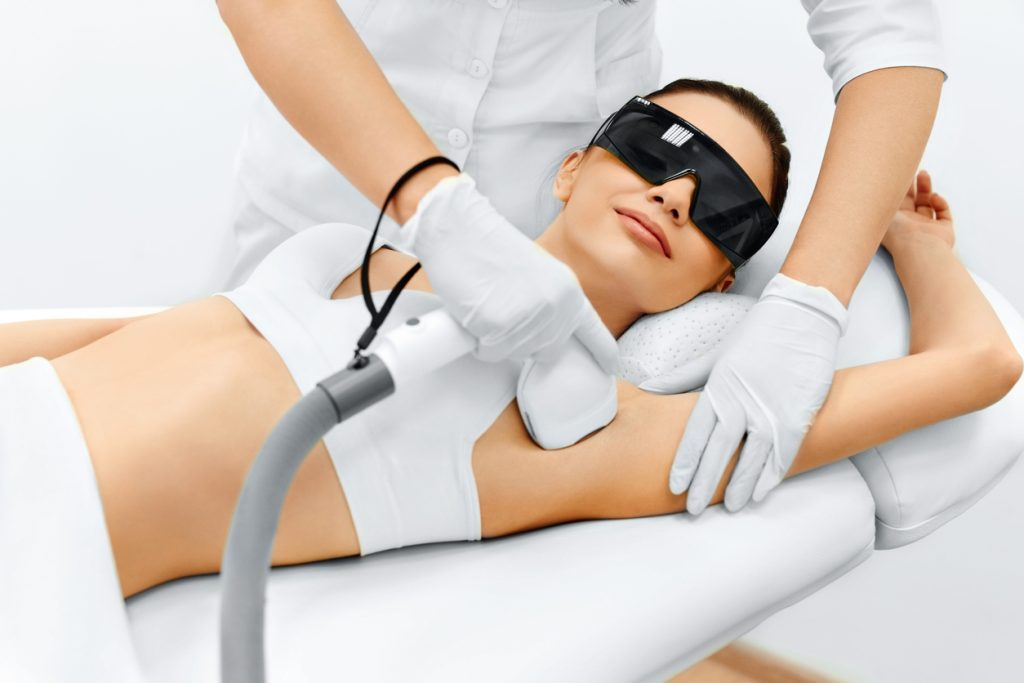
Dr Beldholm understands that you want your arm lift scars to heal well. That is why he offers his arm lift patients laser scar treatments at no extra charge.
Services such as LED Light Therapy can reduce scar redness and help arm lift scars fade faster. Lasers for scars work by applying non-invasive pulses of light or heat energy to the skin to make dark red scars lighter. Several sessions may be needed for optimal results.
Tip 5: Keep the wound clean
After arm lift surgery, the wound needs time to heal. You might risk a skin infection if you don’t keep the incision clean. If an infection occurs, it could affect the scar’s final appearance. Dr Beldholm will provide you with instructions to care for your incision after arm lift surgery to lower the chance of infection.
Tip 6: Don’t smoke
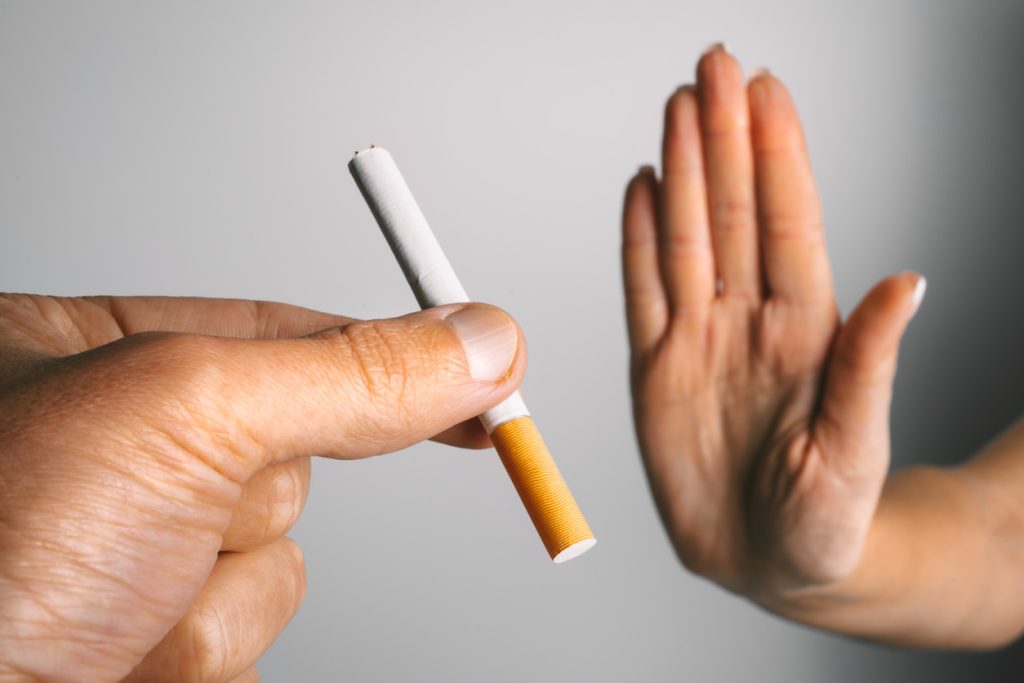
Smoking is one of the most dangerous things you can do after arm lift surgery. Tobacco users tend to have poor wound healing compared to non-smokers. If you picked up the habit after recovering from arm lift surgery, you’ll need to quit immediately to avoid wound healing problems.
Tip 7: Eat a balanced diet

While a healthy diet won’t guarantee a nice-looking scar after upper arm lift surgery, it can certainly help the skin heal. Minerals and vitamins such as Vitamins A, C, E, and zinc are essential for healthy skin. If your skin is in optimal health, it has a better chance of forming scars that fade and blend with the surrounding skin.
Tip 8: Try a prescription scar gel
Tretinoin (a prescription retinoid cream) contains a biologically active form of Vitamin A, which has a wealth of skin healing benefits. Regular applications of topical tretinoin may improve scars by helping the skin build collagen and speeding cell turnover. A 2014 medical study found that tretinoin for scars was effective at improving scar texture and can be applied along with silicone scar sheets for better healing.
Tip 9: Apply over-the-counter scar creams
While Vitamin E for scars isn’t very beneficial, there are OTC scar gels that may improve scar healing after upper arm lift surgery.
One promising ingredient is centella asiatica (also known as gotu kola). This medicinal herb is native to Asia and has gained traction as a topical scar treatment.As a potential wound-healing agent, centella asiatica promotes healthy skin because it is incredibly hydrating. Skin that is healing from surgery needs proper moisture.
In addition to being a hydrator, centella asiatica also contains active compounds like triterpenes, which are thought to improve wounds, burns, and raised scars after surgery. Triterpenes are believed to aid in collagen synthesis and reduce inflammation.
Tip 10: Be patient
On average, it takes 12 to 18 months for surgical scars to fully mature. The scar may change colour or texture over time before eventually becoming softer and lighter in appearance. While the process can be slow, you’ll need to allow time for nature to work its magic. The human body possessed an incredible natural ability to heal damaged skin and tissue.
Tip 11: Tell your surgeon if you notice anything usual
If your scar is crusting, oozing, separating, or shows any signs of infection as you heal from upper arm lift surgery, contact your surgeon immediately. Dr Beldholm will also ask you to come in for regular follow-up appointments throughout your recovery so he can monitor how your arm lift scars are healing. With careful monitoring, you and your surgeon can avoid possible problems such as infections or necrosis, which can negatively impact scar healing.
Factors that may contribute to poor scarring
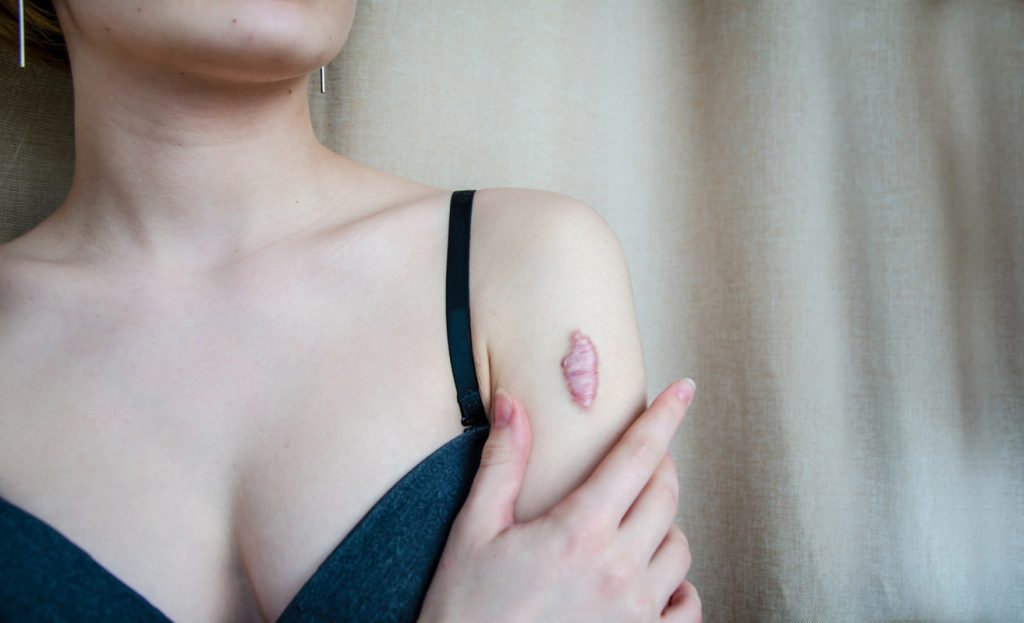
Some surgical scars heal better than others. While there are steps you can take to make arm lift scars heal quicker, there are some factors that may be outside of your control. Let’s take a look at some issues that can lead to poor scarring from upper arm lift surgery.
A history of keloid scarring
Keloid scars are an abnormal type of scarring in which the scar is dark red, brown, and raised. It is more common in patients hailing from African, Asian, and Hispanic backgrounds. People that have had keloid scars in the past, or that have a family history of keloid scars, are more at risk for developing this type of irregular scar after upper arm lift surgery.
If you have a history of keloids, you should discuss this with your arm lift surgeon before agreeing to have surgery. They may be able to place the arm lift incisions in less visible areas (such as on the inside of the upper arm) rather than placing the incision on the back of your arm where it will be more easily seen.
A history of hypertrophic scarring
If you or a blood relative have had a history of hypertrophic scars in the past, there is a good chance your arm lift surgery scar may not heal as nicely. Hypertrophic scars refer to thick, raised scars caused by an abnormal healing response. Essentially, the body forms extra connective tissue at the incision lines, which leads to raised or wide scars that fail to blend in with the nearby skin. Again, this is something you should discuss with your surgery if you’ve had raised scars from injuries in the past.
Issues healing from arm lift surgery
If you had wound healing complications after your operation, you may have a higher risk of abnormal scarring. Some issues that can affect scar fading progress include wound dehiscence, an infection, or skin necrosis (tissue death).
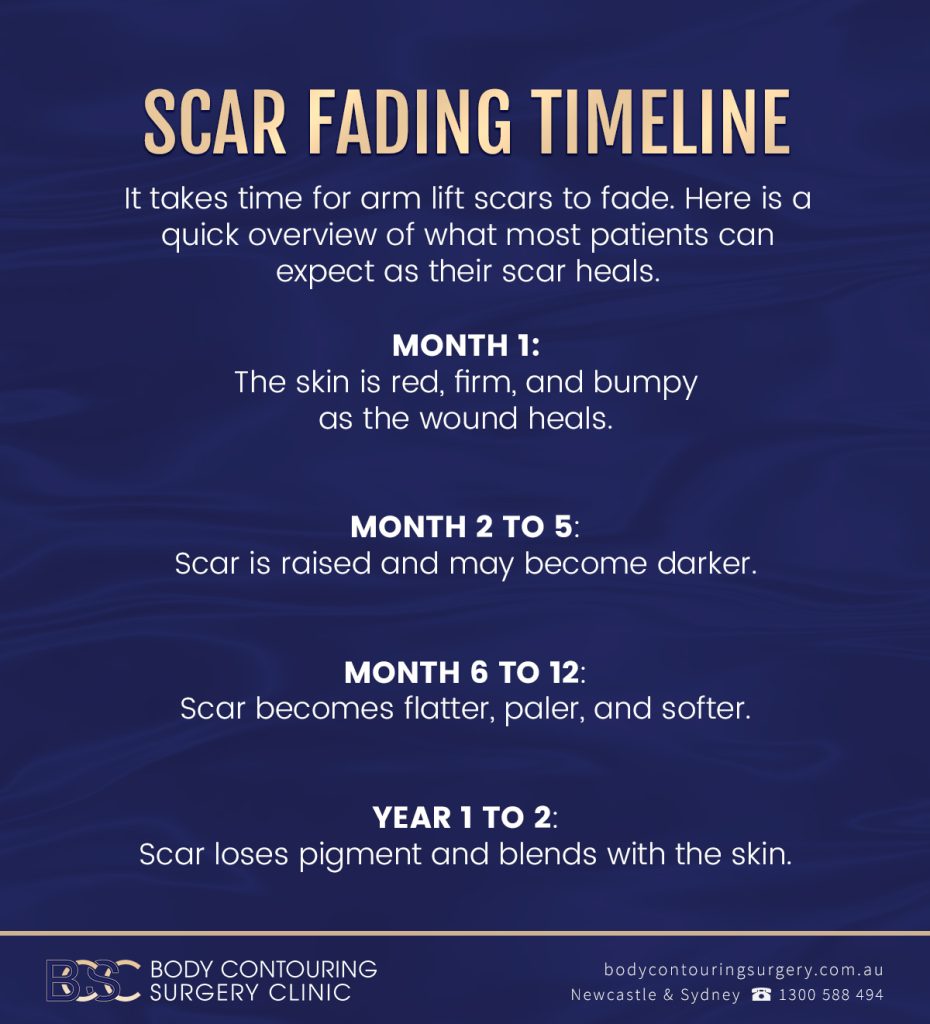
What do I do if my arm lift scar isn’t healing nicely?
Unfortunately, your surgeon cannot control how your scar heals, but there are steps you can take to improve abnormal scarring if it occurs.
If your arm lift scar is red or raised more than 12 months after your surgery, all hope is not lost. There are a few medical procedures that may improve the appearance of scars after upper arm lift surgery. If you find your arm lift scar is cosmetically displeasing because it is wide, thick, or raised, your surgeon may discuss options with you such as steroid shots, scar revision, or laser scar treatments.
Steroid injections
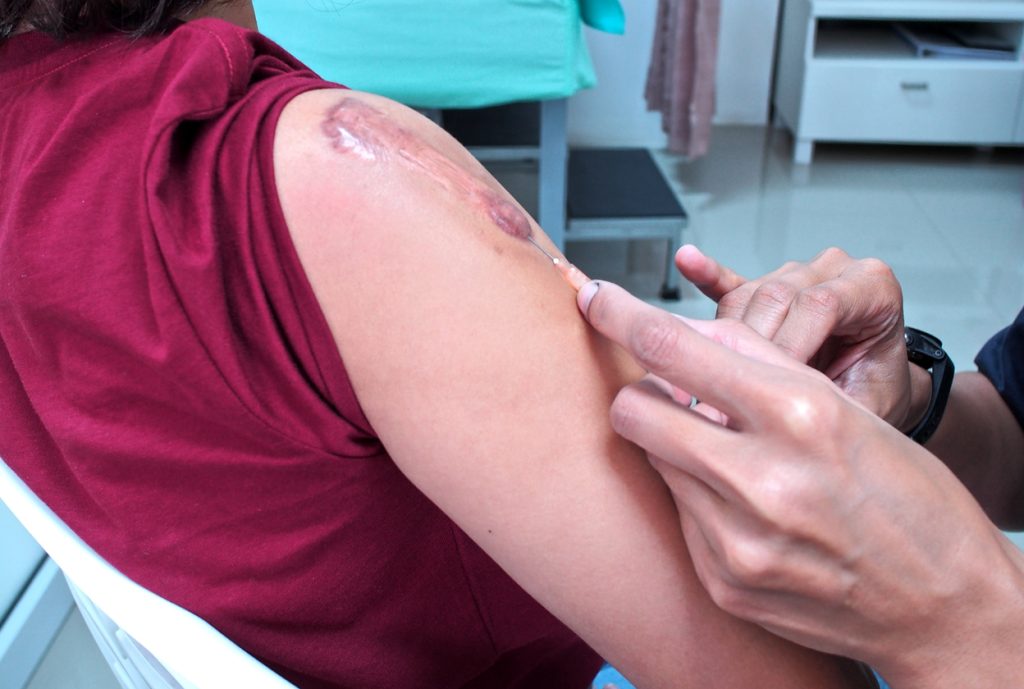
Relatively few patients end up with raised scars after upper arm lift surgery. Those with a family history of keloid scars or hypertrophic scarring are more at risk for developing abnormal scars. Your physician may offer to inject corticosteroids into the scar to improve its appearance.
Injecting triamcinolone (a class of corticosteroids) into the area triggers a natural biological response to aid in healing. Specifically, corticosteroid injections for scars decrease tissue inflammation and slow down an overgrowth of collagen to help soften and flatten raised scars.
The injection may need to be repeated every few weeks to months to achieve a nicer-looking scar. While the scar might not fade or flatten completely, most patients report noticeable improvements after a series of treatments.
Scar revision surgery
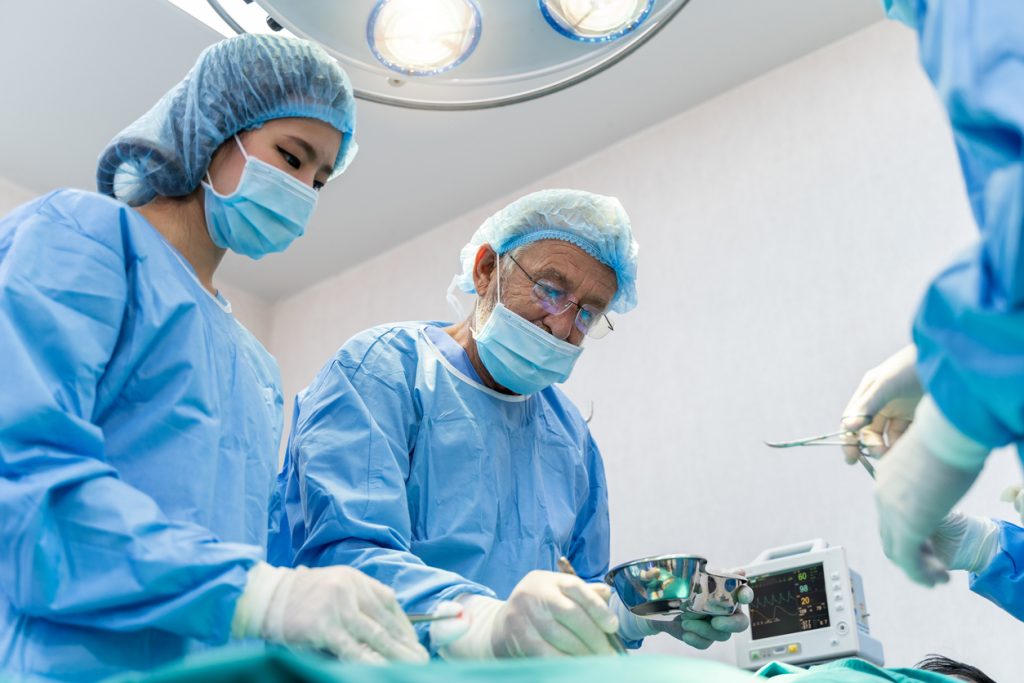
In some cases, when a large scar hasn’t healed as expected, a surgeon may recommend revision surgery for scars. This is a relatively minor procedure that involves cutting out the scar and closing the incision with stitches to potentially improve the scar’s appearance.
Laser scar treatments
Light or heat energy applied to the skin may improve skin cell turnover and reduce scar redness. These procedures are performed in the office using specialised equipment. Laser and light treatments do not involve cutting into the skin, although there can be a stinging or snapping sensation as the handheld device passes over the skin surface.
Skin resurfacing for scars
Minimally invasive treatments such as chemical peels, microneedling, dermabrasion, or dermaplaning may improve scars by removing the outermost layer of skin.
Cryotherapy for scars
Your medical provider may apply argon gas liquid nitrogen to scars. This treatment option is usually not great for arm lift scars as it tends to work better on small scars.
Learn more about upper arm lift surgery
For more information about what to expect during and after brachioplasty surgery, ask your GP for a referral to speak to Dr Bernard Beldholm today.
